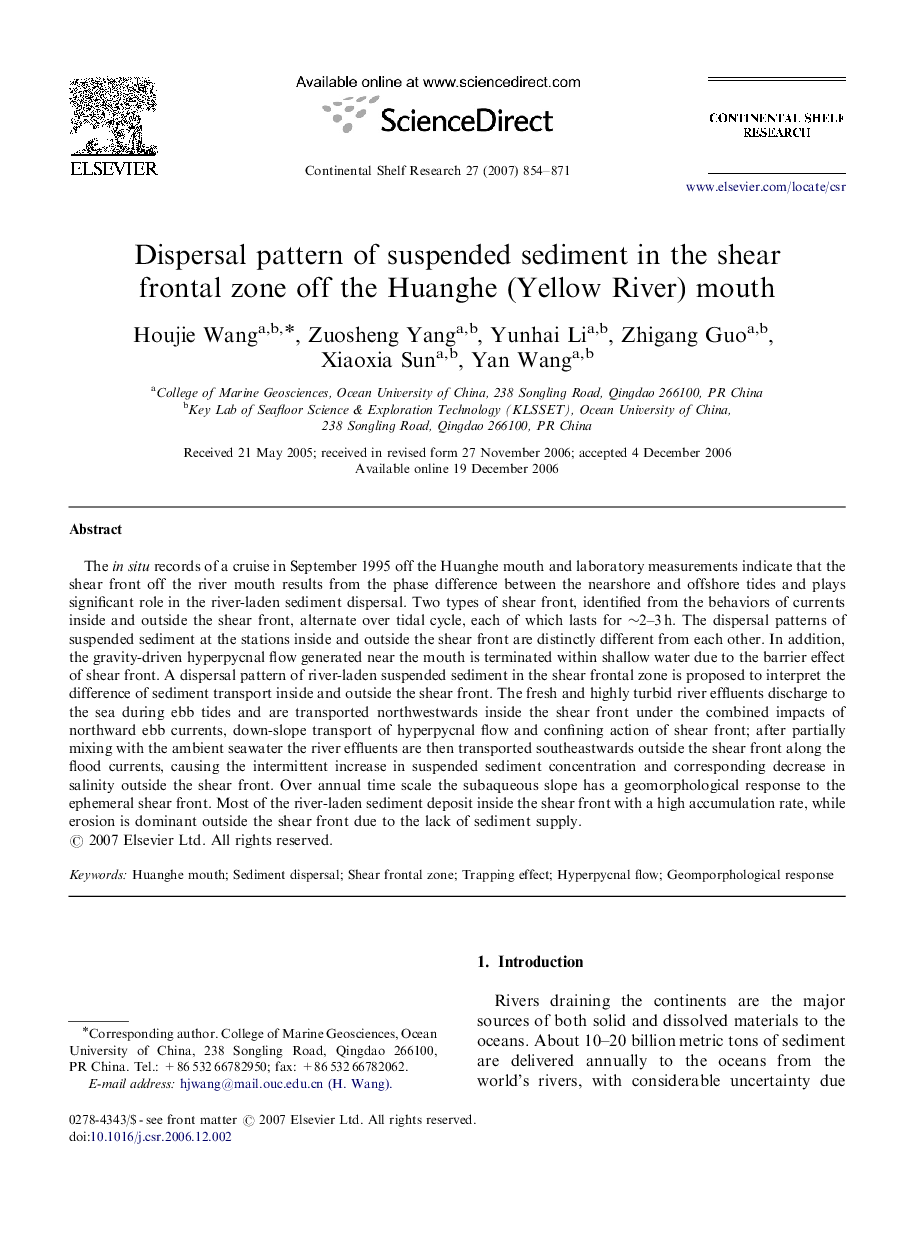| Article ID | Journal | Published Year | Pages | File Type |
|---|---|---|---|---|
| 4533953 | Continental Shelf Research | 2007 | 18 Pages |
The in situ records of a cruise in September 1995 off the Huanghe mouth and laboratory measurements indicate that the shear front off the river mouth results from the phase difference between the nearshore and offshore tides and plays significant role in the river-laden sediment dispersal. Two types of shear front, identified from the behaviors of currents inside and outside the shear front, alternate over tidal cycle, each of which lasts for ∼2–3 h. The dispersal patterns of suspended sediment at the stations inside and outside the shear front are distinctly different from each other. In addition, the gravity-driven hyperpycnal flow generated near the mouth is terminated within shallow water due to the barrier effect of shear front. A dispersal pattern of river-laden suspended sediment in the shear frontal zone is proposed to interpret the difference of sediment transport inside and outside the shear front. The fresh and highly turbid river effluents discharge to the sea during ebb tides and are transported northwestwards inside the shear front under the combined impacts of northward ebb currents, down-slope transport of hyperpycnal flow and confining action of shear front; after partially mixing with the ambient seawater the river effluents are then transported southeastwards outside the shear front along the flood currents, causing the intermittent increase in suspended sediment concentration and corresponding decrease in salinity outside the shear front. Over annual time scale the subaqueous slope has a geomorphological response to the ephemeral shear front. Most of the river-laden sediment deposit inside the shear front with a high accumulation rate, while erosion is dominant outside the shear front due to the lack of sediment supply.
